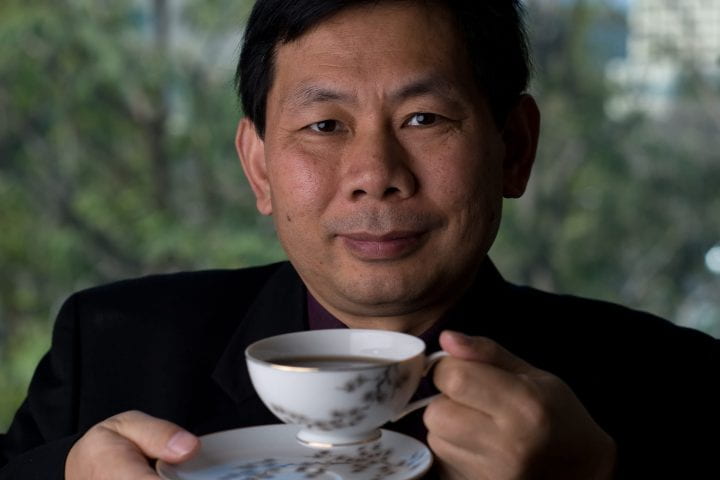Can kava cure cancer?
UC Irvine study of plant compound’s effectiveness against bladder malignancies has yielded promising results

A plant grown in the South Pacific and consumed by islanders for its mild sedative effects is grabbing the attention of cancer researchers around the world, include one in UC Irvine’s Department of Urology.
Traditionally, the root extract of the kava plant is blended into a bitter tea that’s believed to relax muscles, aid sleep, reduce anxiety and even make people more sociable. In native cultures, kava tea is often shared before important government meetings, weddings and other sometimes stressful events to calm the nerves and reduce the chances of conflict.
But Dr. Xiaolin Zi, a UC Irvine associate professor of urology, is discovering that kava compounds called flavokawains stop bladder tumor growth in cell cultures and animal studies, and he believes they might stave off bladder cancer in humans.
At the root of Zi’s research is a seemingly paradoxical fact: South Pacific islanders enjoy low cancer rates despite being heavy smokers.
“Cigarette smoking is a leading cause of bladder cancer, but in the Pacific islands, where kava is plentiful, the incidence of cancer is low despite high smoking rates,” he says. “What I’ve been investigating is how kava compounds can prevent bladder cancer in smokers.”
Since joining UC Irvine in 2002, Zi has studied bioactive agents that come from such plants as the tomato and kava for their chemopreventive impact on prostate and bladder cancer.
Currently, he’s focused on the kava-derived flavokawain A. With funding from the National Cancer Institute, Zi’s team is using mouse models of bladder cancer to demonstrate its efficacy in protecting against the carcinogenic influence of tobacco.
They’ve found that flavokawain A encourages apoptosis, or cell death, in precancerous cells by overcoming the effects of the mutated p53 protein. Known as “the guardian of the genome,” this protein plays a critical role in keeping cells from becoming cancerous, but it’s defective in about half of all human cancers.
(Earlier this year, University of Minnesota researchers published study results in which flavokawain A treatments blocked the proliferation of breast cancer cells.)
Zi’s group has set out to show that mice fed high doses of flavokawain A experience a corresponding slowing of tumor growth. Initial data have been very promising. All three bladder cancer mouse models have responded to the treatment.
To date, Zi has seen no evidence of toxicity from the flavokawain A compound. He notes that this is critical to the compound’s potential as a therapy for human bladder cancer patients.
“The majority of bladder cancer occurs after age 65. Any agents that can delay the onset of cancer are highly beneficial,” says Zi, who’s also a member of UC Irvine Health’s Chao Family Comprehensive Cancer Center. “For older people, being cancer-free for years longer dramatically improves quality of life.”
More than 70,000 new cases of bladder cancer are reported annually in the U.S. The per-patient cost to the nation’s healthcare system of bladder cancer is among the highest of all cancers ($96,000 to $187,000).
Although there are numerous options for the treatment of bladder cancer and success rates are high compared with many other solid-tumor malignancies, the American Cancer Society estimates that nearly 15,000 Americans will die from bladder cancer this year. Many of the current chemotherapeutic treatment regimens for bladder cancer also carry significant side effects and toxicities.
Treatments derived from natural sources, Zi says, may provide a solution. He hopes to conduct clinical trials on human patients in the near future.
“Although there are not yet a lot of studies showing the cancer-fighting effectiveness of natural treatments, many cancer patients are using them,” he adds. “More studies are needed to find out if these natural supplements work and in what circumstances people should use them. There’s a lot of exciting potential in this area of research.”


